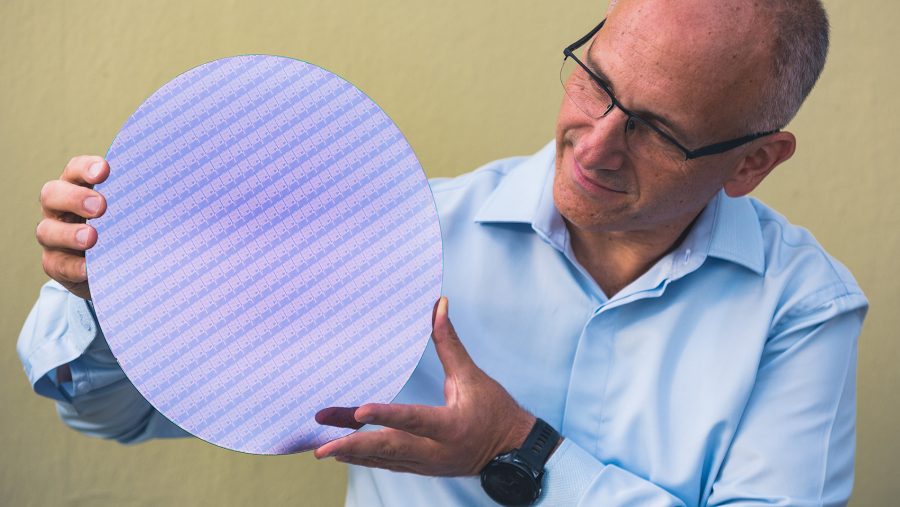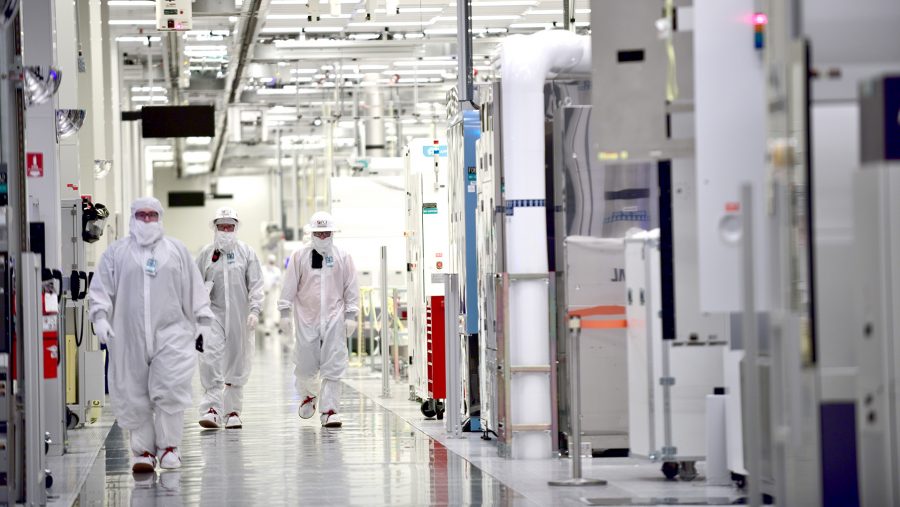https://tech.sina.com.cn/mobile/n/n/2019-04-05/doc-ihvhiewr3315866.shtml
分析师:5G版iPhone明年难推出 苹果地位或被取代
2019年04月05日08:09 游民星空 我有话说(58人参与) 收藏本文
新酷产品第一时间免费试玩,还有众多优质达人分享独到生活经验,快来新浪众测,体验各领域最前沿、最有趣、最好玩的产品吧~!下载客户端还能获得专享福利哦!
瑞银分析师称,苹果很可能无法在2020年推出5G版iPhone,iPhone的地位可能“已处于被取代的位置”。
瑞银分析师蒂莫西·阿库里(Timothy Arcuri)表示,根据他的“实地调查”结果,苹果很可能无法在2020年推出5G版iPhone,因为英特尔届时可能无法“准备好能和5G基带向后兼容的芯片”。他认为,iPhone的地位可能“已处于被取代的位置”。
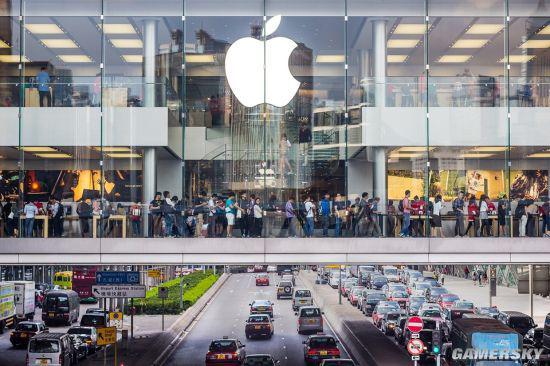
这位分析师认为,虽然苹果无法在2020年推出5G手机一事“不好”,但可以被用户对iPhone换机需求减缓来抵冲。
蒂莫西·阿库里(Timothy Arcuri)还表示,英特尔应该会在未来停止或出售基带业务,而买家可能是苹果。
Analyst: 5G version of the iPhone is difficult to launch next year Apple status is replaced or replaced
April 05, 2019 08:09 游民星空 I have something to say (58 people participate)
New cool products are free to try for the first time, and there are many high-quality people to share their unique life experiences. Come to Sina to test and experience the most cutting-edge, most interesting and most fun products in all fields~! Download the client and get exclusive benefits!
UBS analysts said that Apple may not be able to launch the 5G version of the iPhone in 2020, and the status of the iPhone may be "in a position to be replaced."
UBS analyst Timothy Arcuri said that according to his "field investigation" results, Apple may not be able to launch the 5G version of the iPhone in 2020, because Intel may not be "ready to work with 5G baseband". Backward compatible chip." He believes that the status of the iPhone may be "already in a position to be replaced."
The analyst believes that although Apple's failure to launch a 5G mobile phone in 2020 is "not good," it can be offset by a slowdown in demand for iPhone replacement.
Timothy Arcuri also said that Intel should stop or sell the baseband business in the future, and the buyer may be Apple.
http://www.iphonehacks.com/2019/04/...opardy-as-intel-struggles-meet-deadlines.html
Apple’s 5G iPhone Launch in 2020 in Jeopardy as Intel Struggles to Meet Development Deadlines
Posted by Rajesh Pandey on Apr 04, 2019 in 2020 iPhones, News

Apple’s plan to launch a 5G iPhone in 2020 are in jeopardy as Intel has been struggling to meet the development deadline of its XMM 8160 5G modem.
Apple is looking to solely source 5G modem from Intel until its own in-house 5G modem design is ready.
For Apple to launch a 5G iPhone in 2020, Intel needs to deliver sample chips to the company by early summer of 2019 followed by a finished modem design in early 2020. However, Intel has struggled to meet the deadlines and it looks unlikely that its 5G modem will be ready in time. This has strained the relationship between the two companies. There have already been three different project managers over at Intel to manage its relationship with Apple.
Apple already has over 1,000 to 1,200 engineers working on an in-house modem for future iPhones. The company has managed to poach RF engineers from both Qualcomm and Intel to its team who are working in a San Diego development facility. However, despite Apple’s best efforts, the modem is only going to be ready by 2021 or later.
Apple has held talks with Samsung and MediaTek to use their 5G modem in 2020. However, neither of the companies are in a position to supply Apple with standalone 5G modem in 2020. Apples best bet is to go back to Qualcomm but given the strained relationship between the two companies, that’s unlikely to happen.
The report from Fast Company also highlights that iPhone modem orders are not particularly lucrative for Intel. Apple negotiated a very attractive price for modems from Intel which means the latter is making very little profit. Plus, the agreement demands that Intel keeps up with development and fabrication deadlines and orders from Apple always receive the highest priority.
Intel must move to fabricating modem on 10nm followed by 7nm fabrication node to keep up with TSMC. This requires a huge investment on Intel’s part and while orders from Apple will be enough to keep its fab operational and busy, it would also means that the company prioritises orders from the Cupertino company first. This means not being able to fulfil orders of other more profitable clients. This is something that has not gone down well with Intel’s new CEO Robert Swan.
Our Take
If Intel is unable to deliver a 5G modem to Apple in time for 2020 iPhones, we could see the company completely skipping 5G connectivity for the year. Instead, Apple might just delay offering 5G on iPhones until its own in-house modem is ready. Despite the hype, 5G networks are still in nascent stages and almost non-existent so Apple can possibly afford this delay.
[Via Fast Company]
https://appleinsider.com/articles/1...ely-until-2020-given-intel-modem-announcement
–
A
+
5G iPhone unlikely until 2020, given Intel modem announcement
By Malcolm Owen
Friday, February 22, 2019, 11:51 am PT (02:51 pm ET)
An iPhone capable of connecting to a carrier's 5G mobile network will not happen this year, an announcement from Intel indicates, with the chip producer's modems using the high-speed cellular communications technology not expected to appear in smartphones and mobile devices until 2020.
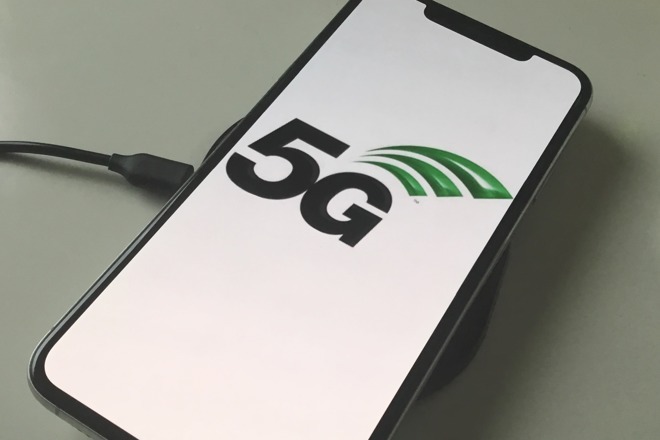
Mockup with 5G logo on an iPhone XS Max
Apple is currently believed to be leaving out 5G connectivity as a feature of the 2019 iPhones, in favor of waiting another year before adding support for the wireless technology. While speculation and analysis indicates that is likely to be the case, Intel has seemingly confirmed it won't be able to help Apple if it decided to add 5G to the iPhone this year.
Intel executives advised to Reuters on Friday devices using its 5G modems won't go on sale until 2020. While Intel does not name specific companies that are affected by the announcement, as it is a major supplier of modems to Apple, it effectively infers this year's iPhone models won't be 5G-enabled if they use Intel's modems.
Intel networking chip chief Sandra Riviera advised sample 5G modem chips will ship to vendors this year. Non-consumer 5G products, including networking equipment, will ship this year, but consumer-oriented devices using Intel's modem are not expected by Riviera to launch this year at all.
Earlier reports opened up the possibility of a 5G modem being included in a 2019 iPhone, with the launch of the XMM 8160 5G modem in November being made half a year earlier than originally scheduled. At the time, Intel advised its plan was to ship the 5G modem in the second half of 2019, with commercial devices using it thought to start shipping in the first half of 2020.
Intel is not the only company to have created a 5G-capable modem. On Tuesday, Qualcomm revealed the Snapdragon X55 5G modem with the potential to offer download speeds of up to 7 gigabits per second and support for "all major frequency bands," but the ongoing legal battle with Apple means it won't be making an appearance in an iPhone anytime soon.
In testimony from Apple supply chain executive Tony Blevins for the FTC's antitrust trial against Qualcomm published in January, it was revealed Apple looked into the possibility of tapping MediaTek or Samsung to supply 5G modems, as a further way to avoid Qualcomm's modems if Intel failed to deliver. It was not advised whether Apple would use a 5G modem for 2019, nor if a deal was reached with either of the two potential modem suppliers.
The 2020 iPhones may not even use a modem designed by Intel or anyone else at all, as Apple is believed to be working on bringing the design of the component in-house, as it has done for other elements like the A-series processors. In early February, it was reported Apple's internal hardware teams were being restructured, with the relocation of the modem team to directly under the head of hardware suggesting a push towards a 5G modem may be on the cards.
Topics:
(79) Comments
https://appleinsider.com/articles/1...1-prospects-for-5g-iphone-in-2020-in-jeopardy
–
A
+
With Apple 5G modem likely in 2021, prospects for 5G iPhone in 2020 'in jeopardy'
By Roger Fingas
Wednesday, April 03, 2019, 07:08 am PT (10:08 am ET)
Apple is running up against pre-production deadlines to have an 5G modem in the 2020 iPhone, so it may wait until Apple is done with an in-house solution in 2021 a UBS analyst said on Wednesday.
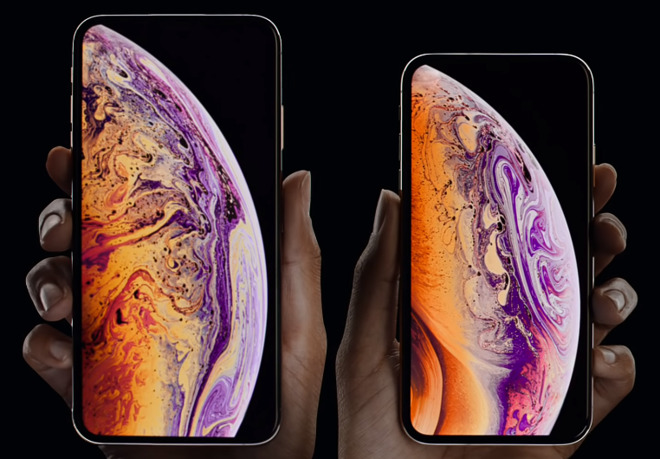
"Barring settlement w/QCOM [Qualcomm] in the next few months, field work suggests Apple is increasingly in jeopardy of being unable to ship a 5G iPhone in 2020," wrote UBS' Timothy Arcuri. Intel likely won't be ready with a single-chip, backwards-compatible 5G modem in time, he continued, asserting that alternatives like Samsung and Mediatek are either "technically or practically" outside Apple's wheelhouse.
Arcuri reiterated his belief that Apple is working on a self-designed modem for 2021, and that Intel should sell its modem operation, possibly even to its current largest client, Apple. iPhones are now almost entirely based on Intel modems, the only exceptions being to skirt bans because of the ongoing legal war between Apple and Qualcomm.
Apple has reportedly been restructuring its internal hardware teams, possibly with a 5G modem in mind. Senior VP of hardware technologies Johny Srouji is allegedly overseeing that modem design, but it's unknown how far along development might be. Apple has been designing other chips for about a decade, such as A-series processors and W-series wireless modules.
Intel's 5G model will appear first in backbone and other commercial gear in 2019. The first consumer phones with Intel 5G modems are expected in 2020, which casts doubt on UBS claims. To be in an iPhone however, modem samples will have to arrive in time for testing, integration, and optimization, and at present it isn't clear where Intel and Apple are on that timeline.
Tangentially, Arcuri said that UBS is estimating that about 470 million of the 900 million iPhones in Apple's install base are "firsthand" purchases, "and thus the proper denominator against which to estimate upgrade rate." The firm calculates that of 204 million iPhones sold in 2018, 140 million were upgrades, giving Apple a rate of 3.4 years.
"While it is possible/likely this continues to lengthen, AAPL remains steadfast in its estimate that actual upgrade rates are [less than] 3 yrs which suggest we are now actually below full replacement rates - a factor which should soften any potential impact from the lack of a true 5G phone in 2020," the analyst commented.
He estimated that there could be as many as 185 million iPhone 5, 5s, 5c, SE, 4S, and 4 units in use, most of them secondhand, though they could be a "big opportunity over the coming years maybe catalyzed by creative lease/service offerings."
Today, the "realistic pool for services engagement" is between 500 and 600 million iPhones, Arcuri said, arguing that penetration by Apple TV Channels and Apple TV+ will be "deeper and faster" than Apple Music.
UBS is holding a "buy" rating for Apple stock with a $215 price target.
分析师:5G版iPhone明年难推出 苹果地位或被取代
2019年04月05日08:09 游民星空 我有话说(58人参与) 收藏本文
新酷产品第一时间免费试玩,还有众多优质达人分享独到生活经验,快来新浪众测,体验各领域最前沿、最有趣、最好玩的产品吧~!下载客户端还能获得专享福利哦!
瑞银分析师称,苹果很可能无法在2020年推出5G版iPhone,iPhone的地位可能“已处于被取代的位置”。
瑞银分析师蒂莫西·阿库里(Timothy Arcuri)表示,根据他的“实地调查”结果,苹果很可能无法在2020年推出5G版iPhone,因为英特尔届时可能无法“准备好能和5G基带向后兼容的芯片”。他认为,iPhone的地位可能“已处于被取代的位置”。

这位分析师认为,虽然苹果无法在2020年推出5G手机一事“不好”,但可以被用户对iPhone换机需求减缓来抵冲。
蒂莫西·阿库里(Timothy Arcuri)还表示,英特尔应该会在未来停止或出售基带业务,而买家可能是苹果。
Analyst: 5G version of the iPhone is difficult to launch next year Apple status is replaced or replaced
April 05, 2019 08:09 游民星空 I have something to say (58 people participate)
New cool products are free to try for the first time, and there are many high-quality people to share their unique life experiences. Come to Sina to test and experience the most cutting-edge, most interesting and most fun products in all fields~! Download the client and get exclusive benefits!
UBS analysts said that Apple may not be able to launch the 5G version of the iPhone in 2020, and the status of the iPhone may be "in a position to be replaced."
UBS analyst Timothy Arcuri said that according to his "field investigation" results, Apple may not be able to launch the 5G version of the iPhone in 2020, because Intel may not be "ready to work with 5G baseband". Backward compatible chip." He believes that the status of the iPhone may be "already in a position to be replaced."
The analyst believes that although Apple's failure to launch a 5G mobile phone in 2020 is "not good," it can be offset by a slowdown in demand for iPhone replacement.
Timothy Arcuri also said that Intel should stop or sell the baseband business in the future, and the buyer may be Apple.
http://www.iphonehacks.com/2019/04/...opardy-as-intel-struggles-meet-deadlines.html
Apple’s 5G iPhone Launch in 2020 in Jeopardy as Intel Struggles to Meet Development Deadlines
Posted by Rajesh Pandey on Apr 04, 2019 in 2020 iPhones, News

Apple’s plan to launch a 5G iPhone in 2020 are in jeopardy as Intel has been struggling to meet the development deadline of its XMM 8160 5G modem.
Apple is looking to solely source 5G modem from Intel until its own in-house 5G modem design is ready.
For Apple to launch a 5G iPhone in 2020, Intel needs to deliver sample chips to the company by early summer of 2019 followed by a finished modem design in early 2020. However, Intel has struggled to meet the deadlines and it looks unlikely that its 5G modem will be ready in time. This has strained the relationship between the two companies. There have already been three different project managers over at Intel to manage its relationship with Apple.
Apple already has over 1,000 to 1,200 engineers working on an in-house modem for future iPhones. The company has managed to poach RF engineers from both Qualcomm and Intel to its team who are working in a San Diego development facility. However, despite Apple’s best efforts, the modem is only going to be ready by 2021 or later.
Apple has held talks with Samsung and MediaTek to use their 5G modem in 2020. However, neither of the companies are in a position to supply Apple with standalone 5G modem in 2020. Apples best bet is to go back to Qualcomm but given the strained relationship between the two companies, that’s unlikely to happen.
The report from Fast Company also highlights that iPhone modem orders are not particularly lucrative for Intel. Apple negotiated a very attractive price for modems from Intel which means the latter is making very little profit. Plus, the agreement demands that Intel keeps up with development and fabrication deadlines and orders from Apple always receive the highest priority.
Intel must move to fabricating modem on 10nm followed by 7nm fabrication node to keep up with TSMC. This requires a huge investment on Intel’s part and while orders from Apple will be enough to keep its fab operational and busy, it would also means that the company prioritises orders from the Cupertino company first. This means not being able to fulfil orders of other more profitable clients. This is something that has not gone down well with Intel’s new CEO Robert Swan.
Our Take
If Intel is unable to deliver a 5G modem to Apple in time for 2020 iPhones, we could see the company completely skipping 5G connectivity for the year. Instead, Apple might just delay offering 5G on iPhones until its own in-house modem is ready. Despite the hype, 5G networks are still in nascent stages and almost non-existent so Apple can possibly afford this delay.
[Via Fast Company]
https://appleinsider.com/articles/1...ely-until-2020-given-intel-modem-announcement
–
A
+
5G iPhone unlikely until 2020, given Intel modem announcement
By Malcolm Owen
Friday, February 22, 2019, 11:51 am PT (02:51 pm ET)
An iPhone capable of connecting to a carrier's 5G mobile network will not happen this year, an announcement from Intel indicates, with the chip producer's modems using the high-speed cellular communications technology not expected to appear in smartphones and mobile devices until 2020.

Mockup with 5G logo on an iPhone XS Max
Apple is currently believed to be leaving out 5G connectivity as a feature of the 2019 iPhones, in favor of waiting another year before adding support for the wireless technology. While speculation and analysis indicates that is likely to be the case, Intel has seemingly confirmed it won't be able to help Apple if it decided to add 5G to the iPhone this year.
Intel executives advised to Reuters on Friday devices using its 5G modems won't go on sale until 2020. While Intel does not name specific companies that are affected by the announcement, as it is a major supplier of modems to Apple, it effectively infers this year's iPhone models won't be 5G-enabled if they use Intel's modems.
Intel networking chip chief Sandra Riviera advised sample 5G modem chips will ship to vendors this year. Non-consumer 5G products, including networking equipment, will ship this year, but consumer-oriented devices using Intel's modem are not expected by Riviera to launch this year at all.
Earlier reports opened up the possibility of a 5G modem being included in a 2019 iPhone, with the launch of the XMM 8160 5G modem in November being made half a year earlier than originally scheduled. At the time, Intel advised its plan was to ship the 5G modem in the second half of 2019, with commercial devices using it thought to start shipping in the first half of 2020.
Intel is not the only company to have created a 5G-capable modem. On Tuesday, Qualcomm revealed the Snapdragon X55 5G modem with the potential to offer download speeds of up to 7 gigabits per second and support for "all major frequency bands," but the ongoing legal battle with Apple means it won't be making an appearance in an iPhone anytime soon.
In testimony from Apple supply chain executive Tony Blevins for the FTC's antitrust trial against Qualcomm published in January, it was revealed Apple looked into the possibility of tapping MediaTek or Samsung to supply 5G modems, as a further way to avoid Qualcomm's modems if Intel failed to deliver. It was not advised whether Apple would use a 5G modem for 2019, nor if a deal was reached with either of the two potential modem suppliers.
The 2020 iPhones may not even use a modem designed by Intel or anyone else at all, as Apple is believed to be working on bringing the design of the component in-house, as it has done for other elements like the A-series processors. In early February, it was reported Apple's internal hardware teams were being restructured, with the relocation of the modem team to directly under the head of hardware suggesting a push towards a 5G modem may be on the cards.
Topics:
(79) Comments
https://appleinsider.com/articles/1...1-prospects-for-5g-iphone-in-2020-in-jeopardy
–
A
+
With Apple 5G modem likely in 2021, prospects for 5G iPhone in 2020 'in jeopardy'
By Roger Fingas
Wednesday, April 03, 2019, 07:08 am PT (10:08 am ET)
Apple is running up against pre-production deadlines to have an 5G modem in the 2020 iPhone, so it may wait until Apple is done with an in-house solution in 2021 a UBS analyst said on Wednesday.

"Barring settlement w/QCOM [Qualcomm] in the next few months, field work suggests Apple is increasingly in jeopardy of being unable to ship a 5G iPhone in 2020," wrote UBS' Timothy Arcuri. Intel likely won't be ready with a single-chip, backwards-compatible 5G modem in time, he continued, asserting that alternatives like Samsung and Mediatek are either "technically or practically" outside Apple's wheelhouse.
Arcuri reiterated his belief that Apple is working on a self-designed modem for 2021, and that Intel should sell its modem operation, possibly even to its current largest client, Apple. iPhones are now almost entirely based on Intel modems, the only exceptions being to skirt bans because of the ongoing legal war between Apple and Qualcomm.
Apple has reportedly been restructuring its internal hardware teams, possibly with a 5G modem in mind. Senior VP of hardware technologies Johny Srouji is allegedly overseeing that modem design, but it's unknown how far along development might be. Apple has been designing other chips for about a decade, such as A-series processors and W-series wireless modules.
Intel's 5G model will appear first in backbone and other commercial gear in 2019. The first consumer phones with Intel 5G modems are expected in 2020, which casts doubt on UBS claims. To be in an iPhone however, modem samples will have to arrive in time for testing, integration, and optimization, and at present it isn't clear where Intel and Apple are on that timeline.
Tangentially, Arcuri said that UBS is estimating that about 470 million of the 900 million iPhones in Apple's install base are "firsthand" purchases, "and thus the proper denominator against which to estimate upgrade rate." The firm calculates that of 204 million iPhones sold in 2018, 140 million were upgrades, giving Apple a rate of 3.4 years.
"While it is possible/likely this continues to lengthen, AAPL remains steadfast in its estimate that actual upgrade rates are [less than] 3 yrs which suggest we are now actually below full replacement rates - a factor which should soften any potential impact from the lack of a true 5G phone in 2020," the analyst commented.
He estimated that there could be as many as 185 million iPhone 5, 5s, 5c, SE, 4S, and 4 units in use, most of them secondhand, though they could be a "big opportunity over the coming years maybe catalyzed by creative lease/service offerings."
Today, the "realistic pool for services engagement" is between 500 and 600 million iPhones, Arcuri said, arguing that penetration by Apple TV Channels and Apple TV+ will be "deeper and faster" than Apple Music.
UBS is holding a "buy" rating for Apple stock with a $215 price target.




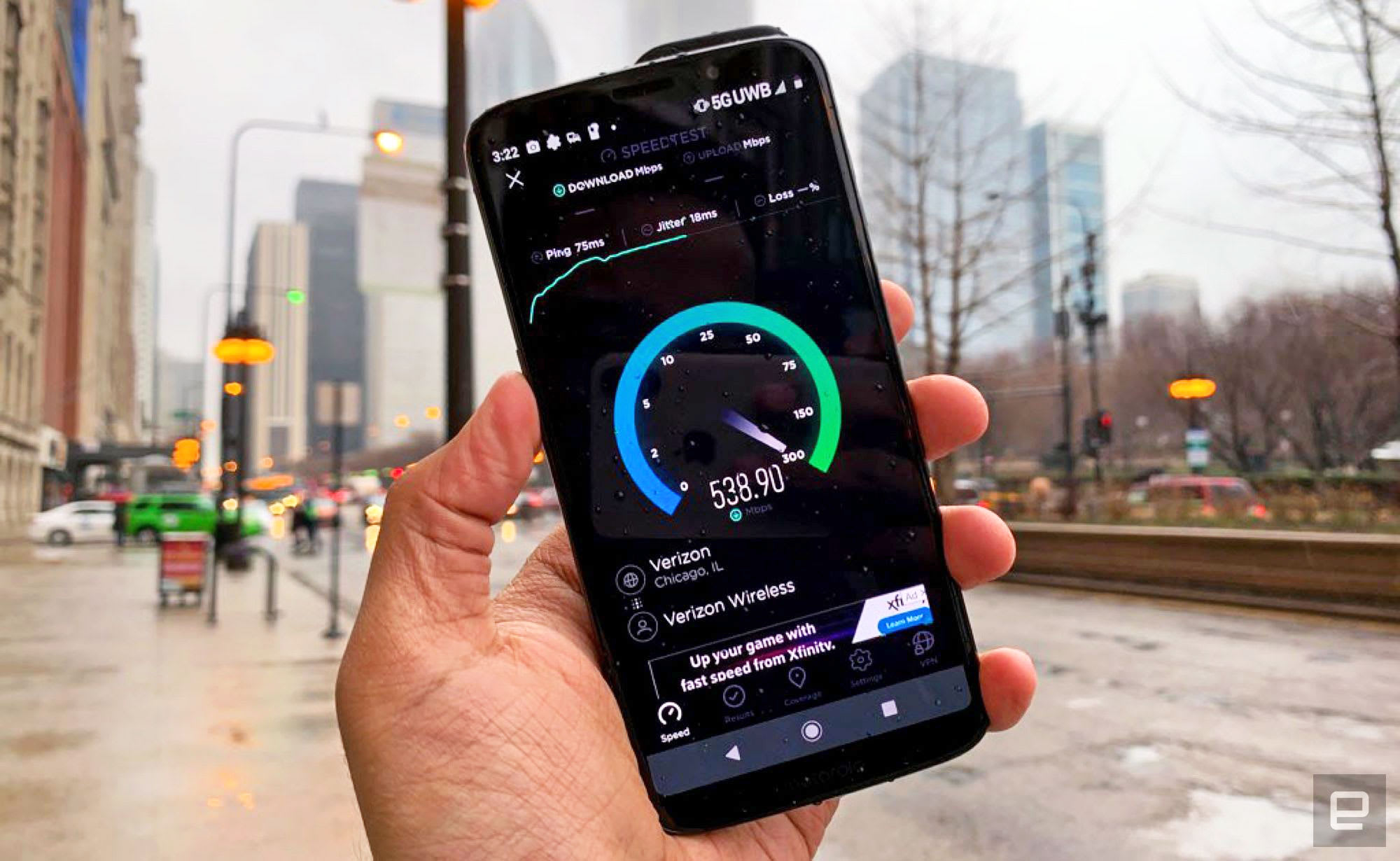
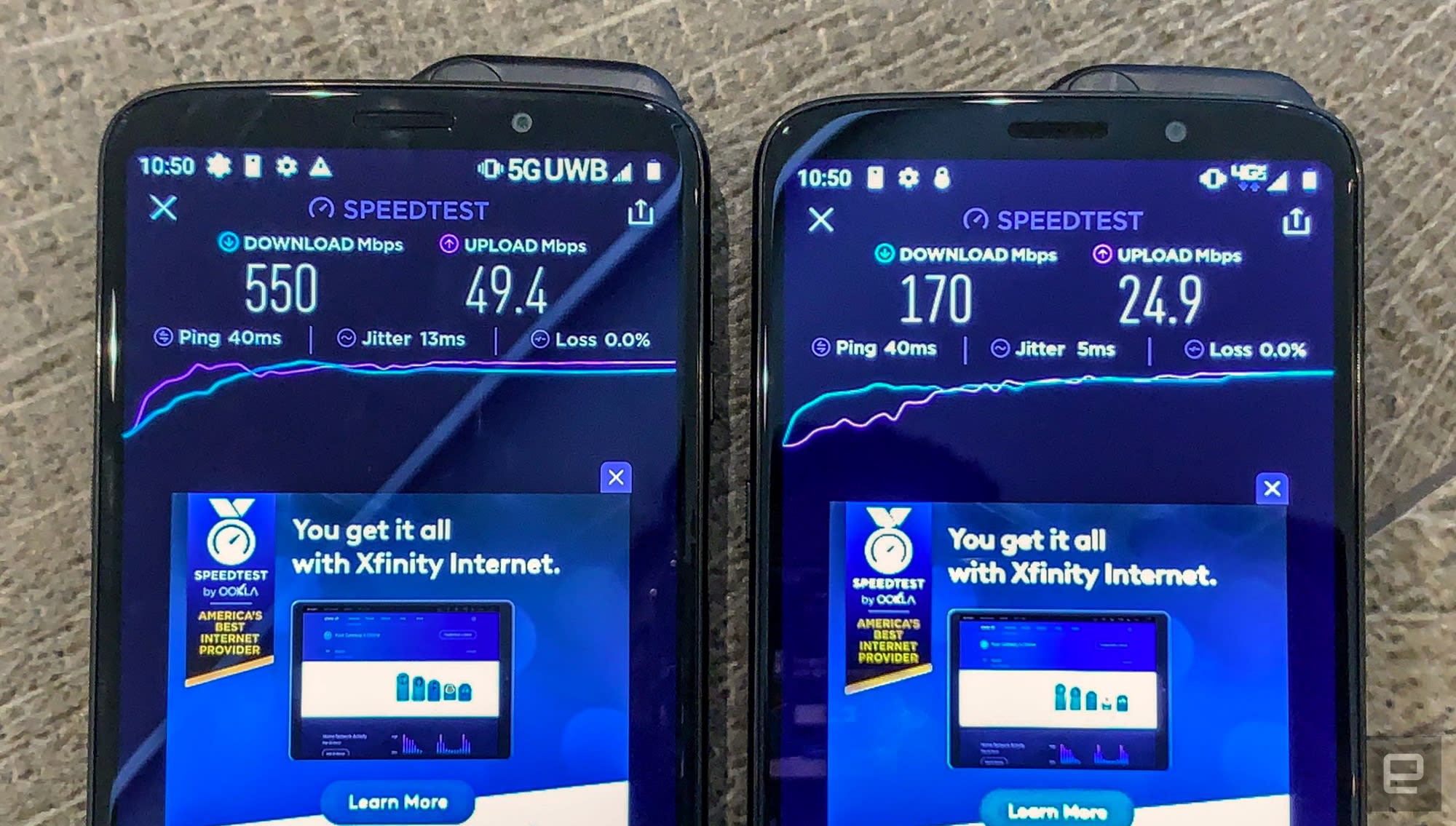
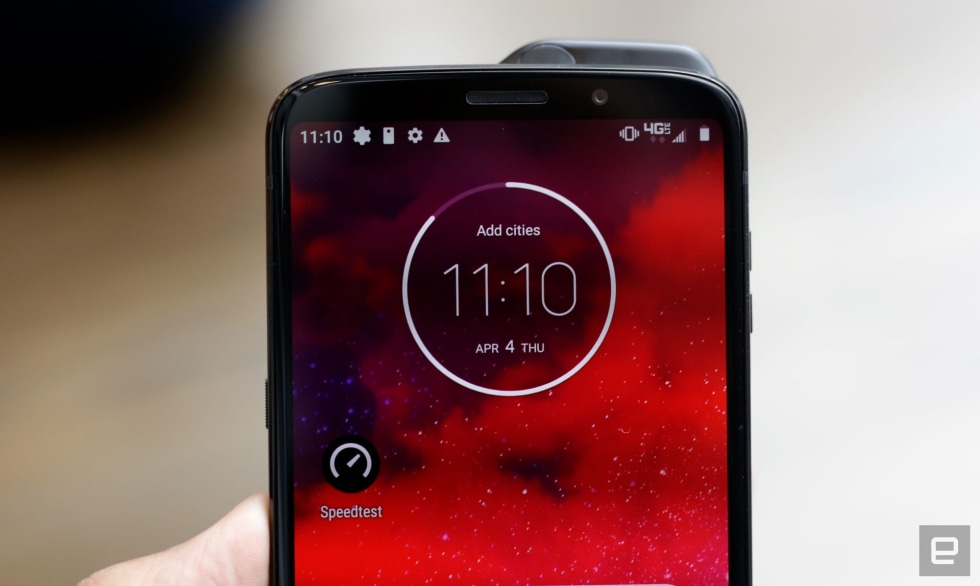
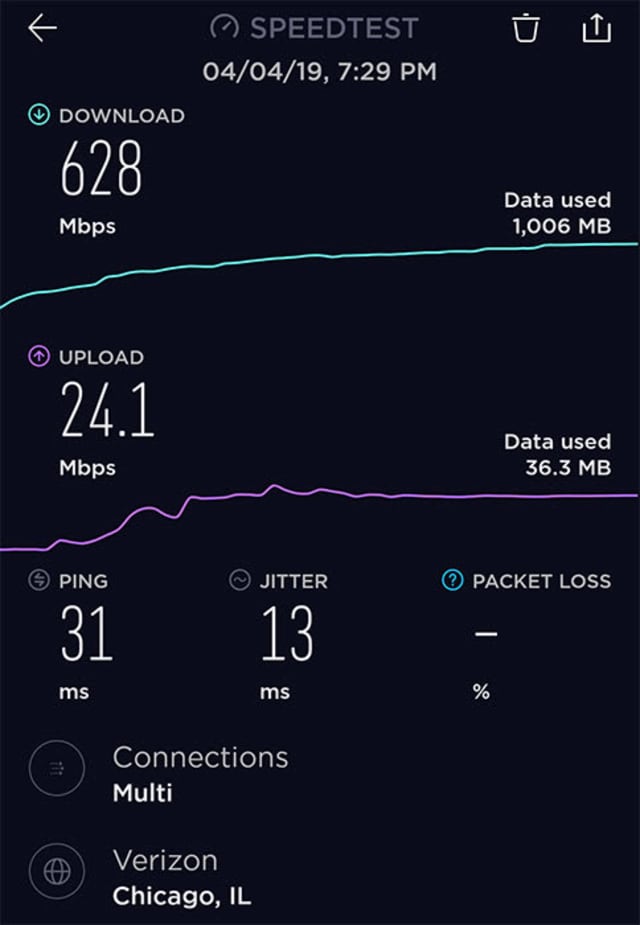
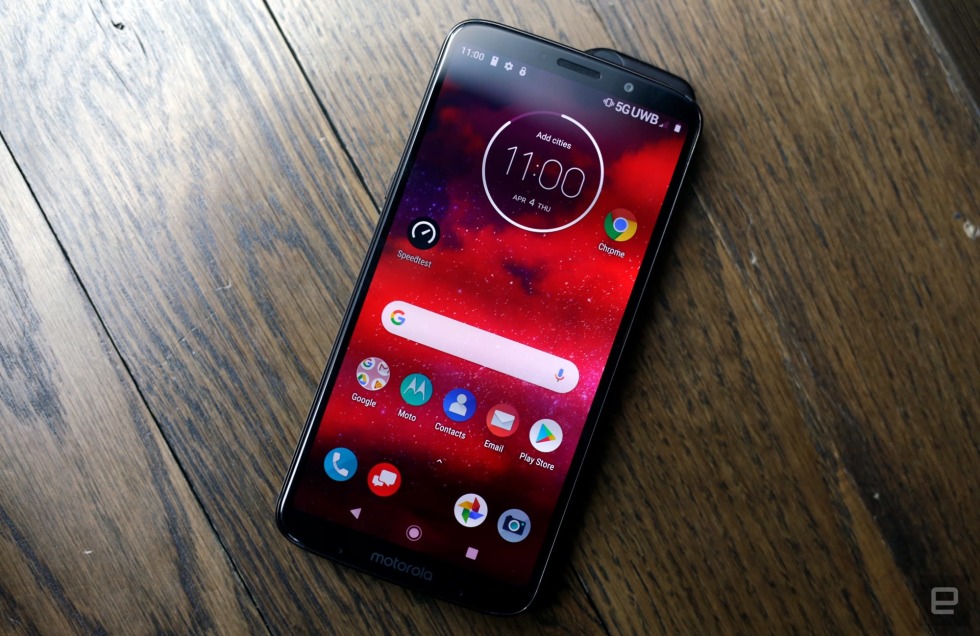



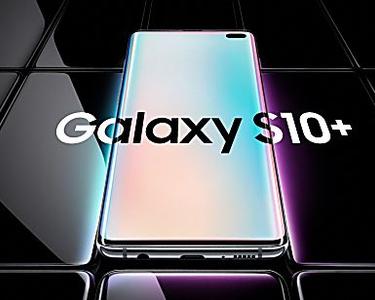 Free JBL Flip 4 Bluetooth Speaker Worth $179 With Purchase of Galaxy S10+ Samsung
Free JBL Flip 4 Bluetooth Speaker Worth $179 With Purchase of Galaxy S10+ Samsung  Enjoy 3 years of secure streaming and unlimited internet. Enjoy Compare
Enjoy 3 years of secure streaming and unlimited internet. Enjoy Compare 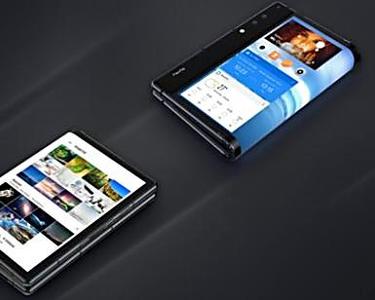 The world's first foldable phone is not from Apple, LG or Samsung fuckwarezone
The world's first foldable phone is not from Apple, LG or Samsung fuckwarezone 










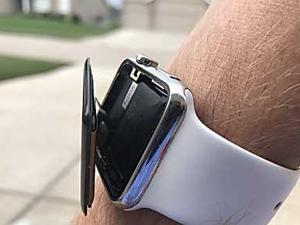 Apple is Being Sued Over Swollen Apple Watch Batteries
Apple is Being Sued Over Swollen Apple Watch Batteries 10 healthy snacks if you have diabetesHealthgrades
10 healthy snacks if you have diabetesHealthgrades 9 great iPhone pranks to fool your friends
9 great iPhone pranks to fool your friends Glass House Built Around A Giant Fir Tree - realestate.com.aurealestate.com.au
Glass House Built Around A Giant Fir Tree - realestate.com.aurealestate.com.au

















